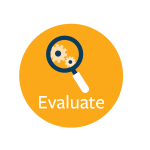
You will be expected to use a variety of sources for your academic work in college. Your professor may require that you use scholarly or peer-reviewed sources for your project or research paper. Knowing the characteristics of different types of sources will help you determine which search tools to use to find them. Explore “Know Your Sources” from Portland Community College for helpful descriptions of types of sources.
As you’ve learned, the Library’s Research by Subject guides are a gateway to resources including WorldCat, library databases, and more. Consult the Research by Subject guide for your subject area(s). The guides connect you to databases and other subject-relevant resources. Many databases have advanced search screens that enable you to limit your search to peer-reviewed, scholarly sources.
Watch: Scholarly vs. Popular Periodicals
Watch: Peer Review in 3 minutes
In your academic work, you may be required to use both primary and secondary sources. Simply put, primary sources are first-hand accounts, from people who had immediate connection to an event or entity. Secondary sources are a step removed from primary sources, providing a layer of analysis or interpretation. Evaluating primary and secondary sources varies by discipline. The summary and examples below provide more information. Ask a librarian if you need help!
Here’s a summary of primary and secondary sources from the Purdue Online Writing Lab (OWL).
Examples of Primary Sources by Discipline
More information is available through the library’s DIY Research Process guide.  “Evaluate” © 2020 Bucknell University. All rights reserved.
“Evaluate” © 2020 Bucknell University. All rights reserved.
“DIY Research” © 2020 Bucknell University. All rights reserved.
